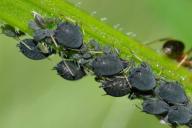The National Institute for Physiological Sciences conducted a study to understand how the brain makes new memories.
They used a unique method that combines light and computer-based techniques.
This helped them figure out how memories are created, especially traumatic ones.

We survive to learn
Animals learn things to survive in different situations. Scientists have been studying a simple kind of learning called associative learning.
They've also discovered brain areas and specific neurons that control forming and remembering new memories.
But they didn't fully understand how certain brain cells work in this process.
How it was tested
Scientists used mice in their study and discovered that silencing dmPFC made the mice less scared.
To learn how these brain cells change, they used advanced imaging and computer techniques.
They created a new way to analyze data and pinpoint which neurons were responsible for fear memories.
They also looked at how these neurons connect and communicate with each other.
The researchers found a group of neurons that make fear memories.
They also discovered a new connection in the brain that links two different memory networks.
This connection helps process information and trigger fear responses.
Why it's important
It shows that memories are made by strengthening connections between brain cells, and the study's findings support this idea.
The study used a combination of light and computer methods to see how brain networks work.
This approach can help scientists learn more about how the brain changes when we learn and remember things.













